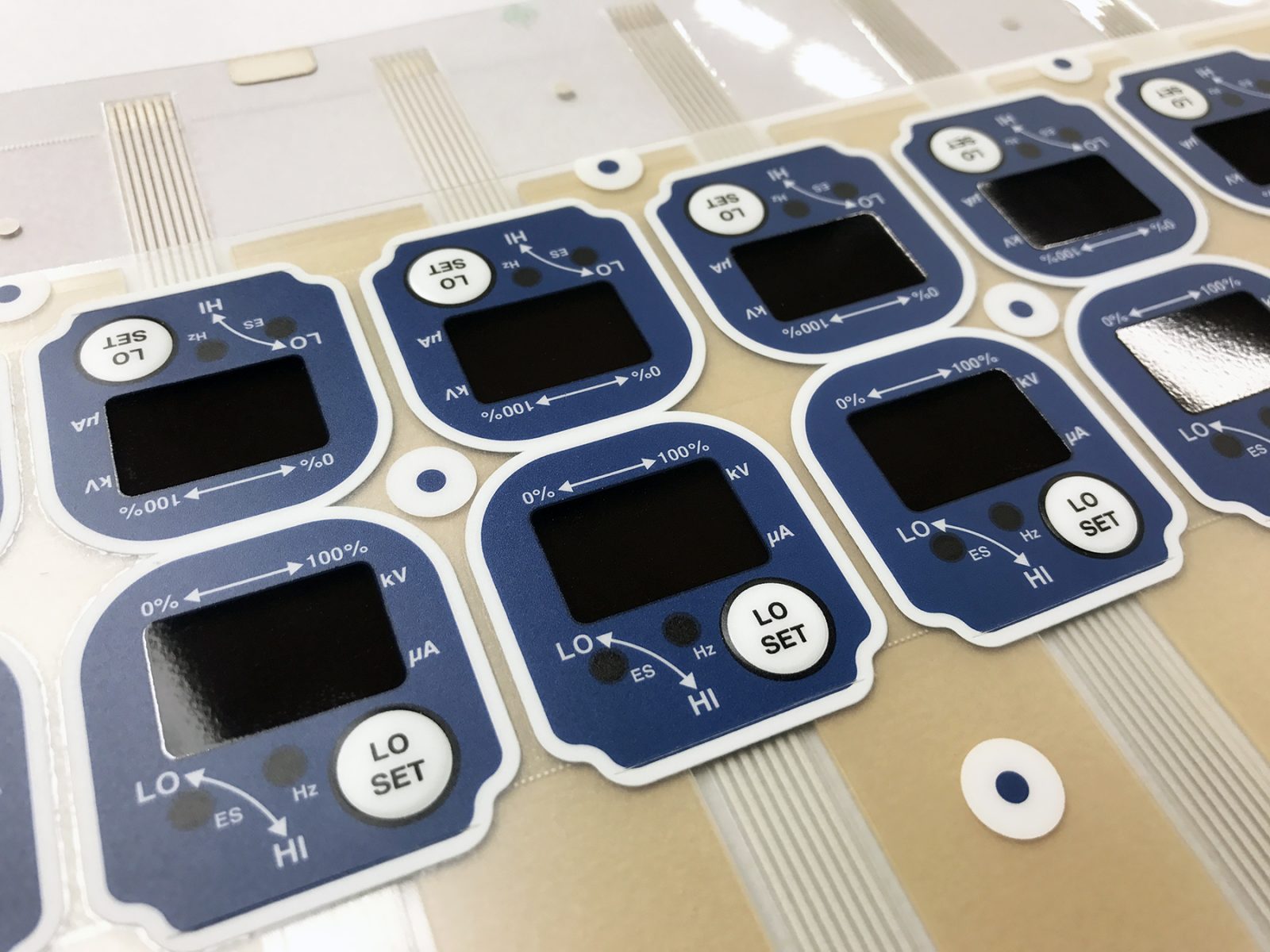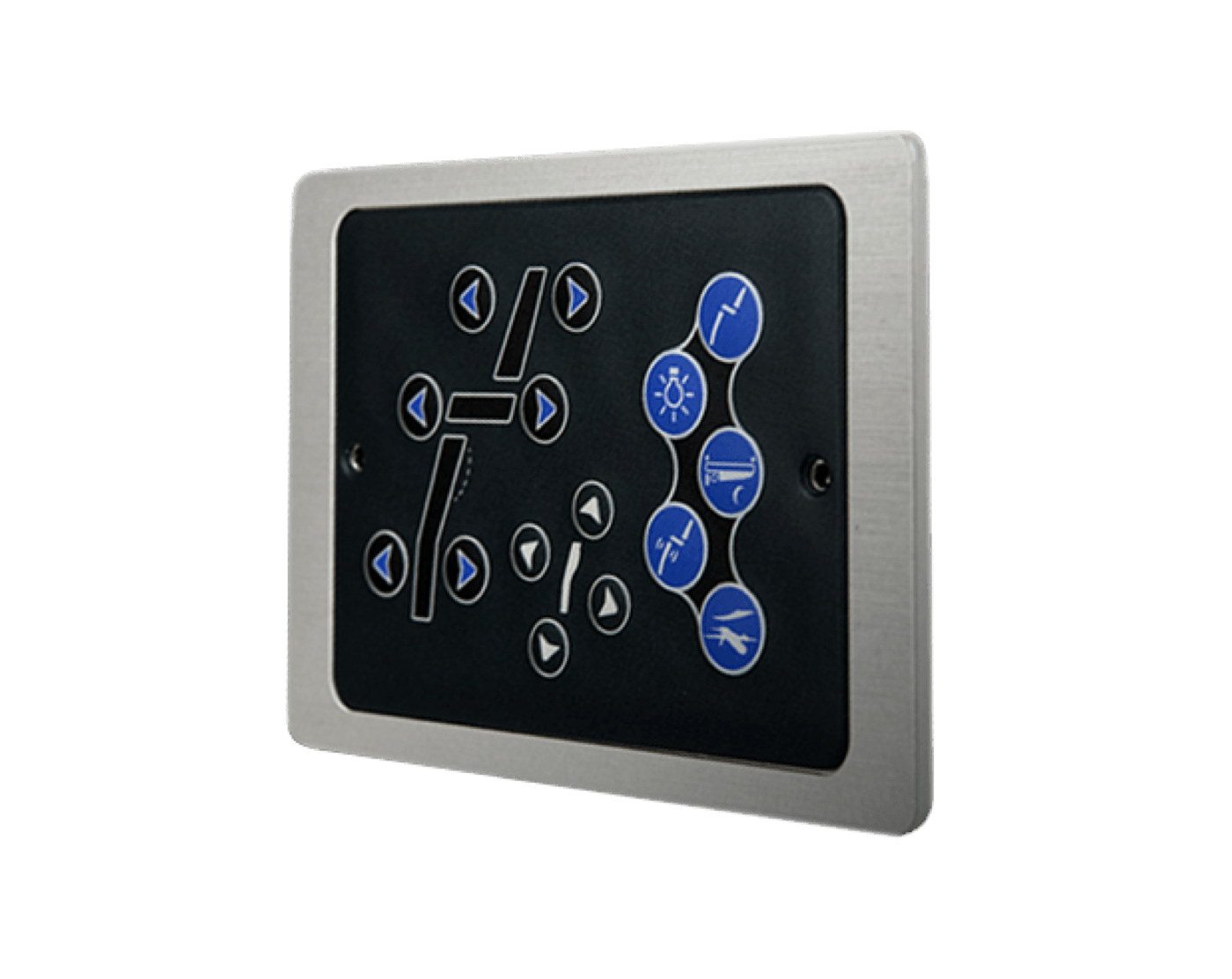What to Seek When Picking a Membrane Layer Switch for Your Job
When you're selecting a membrane switch for your task, numerous vital elements come right into play. You'll need to assume about the products, design, and just how well it straightens with your brand name.
Recognizing Membrane Switch Over Parts
When you dive right into the globe of membrane layer buttons, it's necessary to comprehend the vital elements that make them function. The button generally contains three major layers: the visuals overlay, the spacer layer, and the circuit layer. The graphic overlay provides the visual interface, presenting switches and signs you need for very easy navigation. Under that, the spacer layer guarantees there's adequate range between the circuit and the overlay, permitting the button to activate without constant stress.
The circuit layer, frequently made from published conductive inks, creates the electrical paths. When you push a button, the circuit closes, sending out a signal to the device. Understanding how these layers collaborate assists you choose a membrane switch that's trusted and fits your task requirements. Pay close focus to the thickness and product of each layer, as these aspects influence longevity and performance in different settings.
Material Choice and Its Influence
Picking the best products for your membrane button can substantially impact its efficiency and long life. The selection of substratum, normally polyester or polycarbonate, affects durability and versatility. Polyester is a lot more abrasion-resistant, while polycarbonate offers better clarity and stamina.
Following, think about the adhesive. It requires to withstand ecological factors like dampness and temperature level adjustments. A strong adhesive assurances that your membrane layer button remains undamaged gradually.
Do not forget the visuals overlay. The printing method utilized, whether silkscreen or electronic, affects the switch's visual appeals and durability. High-grade inks will withstand fading and scratching, maintaining a professional look.
Finally, consider ecological problems. If your gadget will certainly be revealed to rough chemicals or severe temperatures, pick materials created to endure these challenges. Your selections in materials will eventually identify the button's dependability and user contentment.
Design Considerations for Individual Experience
Selecting the ideal materials lays the foundation for a successful membrane layer switch, yet the layout likewise plays a significant function in user experience. You'll intend to review just how the format impacts functionality (membrane switch manufacturer). Keep switches and icons user-friendly and well-spaced, making it very easy for customers to browse without complication

Color and comparison are additionally vital; assurance that your design is visually attractive yet still practical. High comparison assists individuals easily identify buttons, particularly in low-light problems.
Finally, review the general visual. A streamlined and contemporary layout can raise individual understanding and make your item much more attractive. Balancing capability with an interesting design will cause a better individual experience and eventually, a more effective product.

Ecological Aspects and Resilience
When choosing a membrane switch, you need to take right into account just how it'll execute in different atmospheres. Aspects like temperature level resistance, wetness and chemical exposure, and mechanical wear can significantly influence its longevity. Comprehending these aspects will help you choose a switch that stands up to your specific problems.
Temperature Level Resistance Demands
As environmental conditions can vary extensively, understanding temperature level resistance is vital for guaranteeing the toughness of your membrane button. You need to review the temperature level variety in which your device will certainly operate. Heats can cause materials to deteriorate, resulting in failing, while low temperature levels may make components brittle and vulnerable to fracturing. Ensure to examine the specs of the materials utilized in the switch, like the glue and overlay, as they directly effect performance. It's also important to contemplate possible temperature level fluctuations and their impacts on the button's integrity. By selecting a membrane layer button with ample temperature level resistance, you'll improve its life expectancy and keep performance in tough atmospheres. Choose wisely to avoid costly replacements down the line.

Moisture and Chemical Exposure
Moisture and chemical direct exposure can significantly influence the efficiency and durability of your membrane layer button, so it's crucial to understand the setting in which it will be made use of. Constantly consult the supplier's specs for chemical compatibility to assure your membrane button preserves its functionality over time. By focusing on dampness and chemical resistance, you can boost the longevity of your button in tough settings.
Mechanical Deterioration
While you might focus on features like visual appeals and performance in your membrane switch, mechanical wear and tear can substantially affect its efficiency in time. Consider how commonly the button will certainly be utilized and the atmosphere it'll remain in. Frequent pushing can cause destruction of products, creating issues like responsive feedback Clicking Here loss and even change failure. Seek models with durable designs, such as those with safety overlays that withstand scratches and put on. Additionally, check for specifications on cycle life, which shows the amount of presses the button can take care of before revealing signs of wear. Picking a durable button guarantees durability and dependability, stopping pricey substitutes and downtime in your project. Always consider resilience along with aesthetics and performance for peak performance.
Modification Options for Branding
When it pertains to branding your membrane layer button, personalization choices are crucial. You can pick layout components and colors that show your brand, together with certain logo placement and size to improve exposure. Additionally, selecting the ideal products and textures can elevate the overall look and really feel, making your product stick out.
Style Components and Shades
A broad array of style elements and shades can make your membrane switch not simply functional however also aesthetically appealing, boosting your brand name identification. Don't neglect about textures; adding a tactile aspect can enhance user experience and make your switch stand out. By thoughtfully picking design aspects and colors, you not just create an item that looks fantastic but likewise enhances your branding regularly and properly.
Logo Placement and Dimension
After finalizing your design elements and colors, the next step is to concentrate on logo positioning and dimension. Your logo design is a vital element of your branding, so you'll desire it to stand out without overwhelming other layout elements. Review where your logo design will certainly be most visible and impactful; usual positionings include the top or center of the button.
Do not fail to remember to ponder just how the logo design straightens with individual interaction. This attention to detail will boost both functionality and brand identification in your task.
Product and Texture Choices
Choosing the ideal materials and textures for your membrane layer button can greatly boost both its capability and visual appeal. You'll want to assess choices like polyester or polycarbonate, as they supply durability and resistance to wear. The texture of the surface area likewise plays an important role; smooth finishes give a streamlined look, while distinctive surfaces can enhance grasp and responsive comments.
Personalizing the materials and appearances permits you to reflect your brand name identification properly. As an example, you could pick a matte coating to communicate elegance or a glossy appearance for a contemporary touch - membrane switch manufacturer. Don't ignore color choices, as dynamic hues can make your switch attract attention, while muted tones can create a much more sophisticated appearance
Price vs. Quality: Locating the Right Balance
When you're taking care of the choices for membrane buttons, stabilizing cost and quality can really feel overwhelming. You wish to guarantee that you're getting a trusted item without damaging the financial institution. Begin by identifying your job's certain needs. Are you focusing on resilience or visual appeals? A lower-cost switch could save you money upfront, however if it compromises performance, you could deal with higher substitute expenses later.
Search for producers that supply an excellent mix of affordability and high criteria. Study their track record and client testimonials to gauge dependability. Occasionally, spending a little bit more in top quality products can save you from future frustrations.
Likewise, take into consideration the long-lasting performance and warranty alternatives. A slightly much more costly button with a solid warranty can prove to be a smarter investment. Eventually, it's regarding locating that wonderful spot where you meet your budget while ensuring your job's success.
Evaluating and Quality Control Protocols
While you might find the ideal membrane switch style, ensuring its high quality with extensive testing procedures is necessary for long-lasting success. Begin by confirming that the producer adheres to sector requirements, such as IPC/WHMA-A -620, to guarantee a trustworthy item. membrane switch manufacturer. You'll desire to examine for thorough screening methods, consisting of ecological, mechanical, and electrical assessments
Ensure the switches undertake toughness screening, mimicing real-world usage to recognize any possible failures. wikipedia reference Pay focus to the producer's quality control process, which must include normal inspections and audits.

Don't forget to request for examples and conduct your very own tests to confirm compatibility with your project. Think about how typically the supplier updates their protocols; advancement in testing can lead to enhanced top quality. By prioritizing these testing and quality control protocols, you'll enhance the chance of a successful and long lasting membrane button for your application.
Regularly Asked Questions
How much time Does a Membrane Switch Over Generally Last?
A membrane layer button typically lasts anywhere from 1 to 10 million cycles, relying on usage and ecological variables. You'll intend to take into consideration your specific demands to guarantee it satisfies your durability needs effectively.
Can Membrane Changes Be Fixed if Harmed?
Yes, you can in some cases fix membrane buttons if they're harmed, yet it often depends on the level of the damage. Minor problems may be reparable, while more significant damage normally needs replacement for correct functionality.
What Are the Usual Applications for Membrane Layer Switches?
Membrane buttons are typically utilized in devices, medical devices, and automotive controls. You'll locate them in consumer electronics, commercial equipment, and even gaming consoles. Their adaptability makes them excellent for numerous customer interfaces and settings.
Exist Specific Certifications for Membrane Switches?
Yes, there are particular certifications for membrane layer switches. Look for UL, CE, and RoHS qualifications to assure safety and compliance. These accreditations indicate the switch meets sector criteria for top quality and environmental safety.
How Do I Make Sure Proper Installation of a Membrane Layer Switch?
To assure correct setup of a membrane button, tidy the surface area thoroughly, align it thoroughly, use this link and apply also pressure. Follow maker standards for adhesive curing time to take full advantage of longevity and capability.
Verdict
When selecting a membrane layer switch for your task, keep these crucial factors in mind: prioritize resilient products, focus on straightforward design, and think about modification for your brand. By thoroughly reviewing these aspects, you'll ensure your membrane layer button not only fulfills your project needs yet also boosts user experience and shows your brand name identity efficiently.